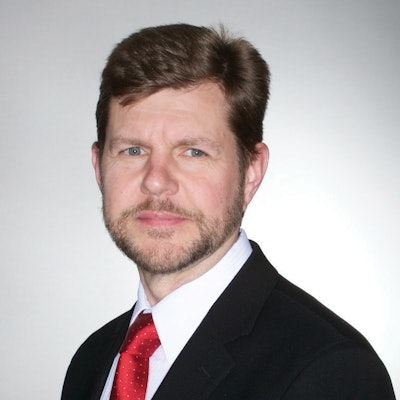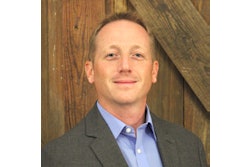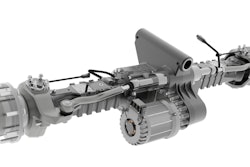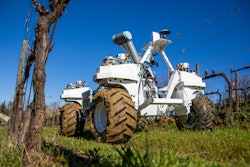
responses submitted by Brian Kreifels, Vice President OEM Sales North America, Schaeffler and Jeff Hemphill, Chief Technical Officer, Schaeffler
Diesel, Electric & Other Power Alternatives
What opportunities for technology and efficiency advancements still exist with diesel engines?
BK: There continue to be many opportunities for improving the efficiency of diesel engines, especially with regard to minimizing friction and thermal losses. To that end, there are a number of technologies – such as next-generation rolling element bearings from our INA and FAG product brands, low-friction coating solutions as well as waste-heat recovery – that have yet to be fully explored.
Additional engine efficiencies can be realized through the use of variable valve actuation strategies (e.g., valve deactivation, cam profile switching, variable cam timing, etc.) as well as active, controlled management of the engine and vehicle systems’ cooling circuits.
Moreover, there are numerous opportunities to reduce emissions “in-cylinder” that can mitigate or even eliminate the need for external aftertreatment devices—such as particulate filters and selective catalytic reduction (SCR)— while still achieving increasingly stringent overall emissions mandates. Indeed, many of the variable valvetrain technologies mentioned above can also be used to achieve improved in-cylinder emissions.
Ultimately, however, it will be a question of whether in-cylinder solutions can control emissions as effectively or even better than aftertreatment devices. Among the advantages of in-cylinder solutions is their inherent ability to eliminate the additional packaging and installation challenges posed by external aftertreatment devices. In addition, in-cylinder solutions offer better emissions control over the engine’s entire lifecycle.
With regard to controlling emissions over the engine’s lifecycle, we are also seeing increasing interest in our INA hydraulic lash adjuster technology—not just with regard to eliminating lash maintenance, but also as a means to reduce the need to open up the engine for service (which can adversely affect vehicle emissions).
Another area where we see increased customer interest is in controlling crankshaft torsional vibrations. As engine power densities and cylinder pressures increase, so do the crankshaft torsionals. Accordingly, customers are now demanding damper solutions, which are offered under our LuK product brand, that offer greater energy absorption capabilities.
How does your company see alternative fuels playing a role in the heavy equipment industry in the coming years?
JH: As fuel cost is always a major percentage of operating cost and pressure to reduce emissions is always rising, alternative fuels are constantly being analyzed by the industry. CNG (compressed natural gas) is a popular option since fracking has dramatically lowered the cost but, so far, the savings have not justified changing over the jobsite fueling infrastructure. Currently, hydrogen is a rising star with several fuel cell offerings but this also faces infrastructure challenges. Biofuels are interesting from a CO2 perspective but face cost challenges. As an engine systems manufacturer, we are relatively unaffected by the choice of fuel from a direct perspective. Of course, the use of alternative fuels can impact engine operating conditions or lubrication, which are factors that have an indirect influence on our systems. In such cases, we may consider optimizing the materials, utilizing special heat treatments, and/or employing any of our proprietary coating solutions to ensure that we are providing a robust solution for the given tribological conditions. We are also enabling fuel cells with our coated bipolar plates. Overall, we have some money on every horse and look forward to seeing how it works out.  Jeff Hemphill, Chief Technical OfficerSchaeffler
Jeff Hemphill, Chief Technical OfficerSchaeffler
What role is electrification—or other alternative energy/power systems—playing in your company’s design initiatives?
BK: Over a decade ago, we stepped back to examine the global megatrends that were expected to affect our customers’ businesses. This led us to develop a strategy that focuses on future mobility trends in which powertrain electrification plays a central role. Accordingly, we established design and development teams in virtually every key global market in order to create pertinent electrification solutions.
Of course, different applications and markets have different needs. Consequently, the challenge for us was to prepare a range of offerings that would support our customers along their electrification journey. To that end, we have developed solutions for mild hybrids, full hybrids as well as fully electric vehicles. Providing a broad portfolio of solutions allows us to support our customers as they align their level of electrification with market demand.
In addition to driveline electrification, there is tremendous interest in electrifying the vehicle’s other mechanical or hydraulic systems. For example, hydraulic cylinders – which pose multiple limitations in areas such as efficiency, controllability, connectivity, NVH (noise, vibration and harshness), and environmental concerns – are utilized in many positions on industrial vehicles. These inherent limitations can be mitigated by replacing the hydraulic cylinders with our innovative electromechanical rod-style actuators.
Are there any emissions or other related regulations your company is monitoring, or feel will have an impact on design efforts and the industry?
BK: As a key partner and development supplier for all the major OEMs, we are actively engaged in understanding how any significant changes in emissions regulations will affect the solutions our customers will require in the coming years. But perhaps an even more fundamental change will be driven by potential government-initiated bans on internal-combustion engines, especially within the heavy-duty and off-highway sectors. Moreover, as further regulations are imposed on the automotive sector, there could be a cascading effect on the commercial vehicle sector as costs for the resulting electrification technologies – as well as consumer acceptance – improves with time. At the end of the day, it will come down to a total cost of ownership (TCO) calculation that will determine which solution(s) can best satisfy the given regulations. We expect both to be continuously evolving over the coming years.
READ MORE: State of the Industry 2020
Challenges & Opportunities
What are the biggest challenges facing the industry currently, or do you see the industry facing in the coming years?
BK: As manufacturers move closer to a future filled with vehicles powered by battery-electric and alternative fuel vehicles, one area of concern is how the necessary recharging/refueling infrastructure will be built—and how it will be paid for.
As a supplier to vehicle OEMs, we must constantly balance the cost of implementing new technologies against overall product cost. We need to focus on bringing value to our customers that will also directly benefit the end user. Such cost concerns can be mitigated by encouraging customers to focus on TCO, because reducing unplanned downtime, increasing productivity and reducing fuel consumption all represent direct benefits for all stakeholders.
What are some of the biggest opportunities you see in the industry?
BK: Along with the inherent efficiency improvements, electrification of the driveline and vehicle subsystems represents a major opportunity for the off-highway industry, as there are many existing automotive technologies and products that can be implemented in off-highway vehicles to help OEMs achieve their development goals. We have developed solutions for mild hybrids, full hybrids as well as fully electric vehicles to support our customers as they align their level of electrification with market demand. Additionally, there are numerous benefits to replacing traditional hydraulic cylinders with electromechanical rod-style actuators.
Are there any technologies or trends which you are currently excited about in the heavy-duty vehicle industry, or most looking forward to seeing in the coming years?
BK: The industry-wide interest in exploring the potential benefits of electrification has been a fantastic opportunity to be an active part of shaping future product generations. It is especially gratifying when we can jointly discuss the benefits and trade-offs of our many new solutions such as e-motors and hybrid modules for electrified drivelines or electromechanical actuators. This dialogue enables us to understand where our solutions are in accord with our customers’ future technology roadmaps, just as it allows us to uncover opportunities to further align with their needs. All of which makes this a unique and exciting time: Suppliers and OEMs are actually able to work together as partners to develop these emerging technologies—as opposed to the more traditional scenario wherein the OEM simply integrates a supplier’s established technology in its product.
At the same time, there are many exciting opportunities to optimize existing non-electrified machine designs, as these will certainly remain in use for the foreseeable future. There are some extremely interesting opportunities to adapt variable valve control solutions, which were originally developed for the automotive sector, to the commercial vehicle sector where they can improve engine efficiency and reduce emissions.
This is an ideal time to work in the heavy-duty vehicle industry. As regulations, markets and technologies continue to change and evolve, there is enormous potential and opportunity for those innovators who can read these trends and capitalize on them by developing the right solutions.




















